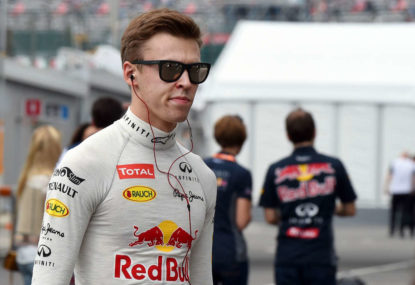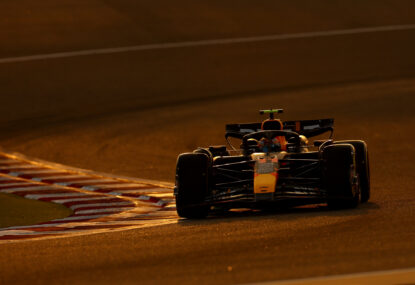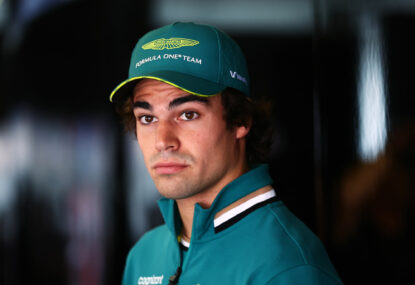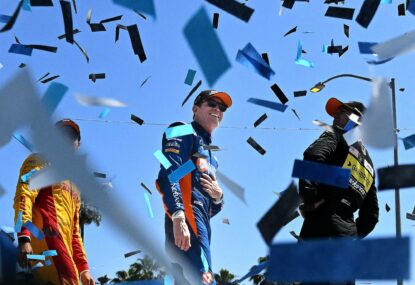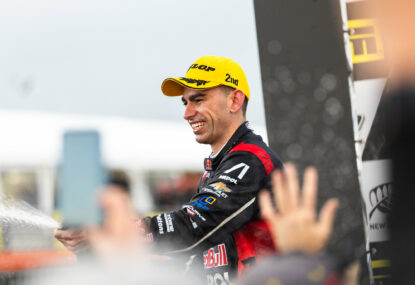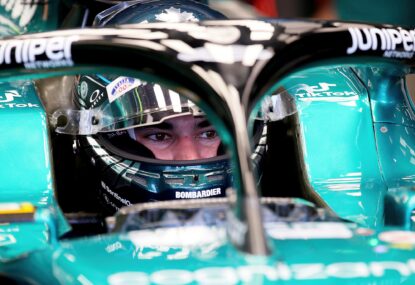Formula One is about to enter one of the most intense periods of its history at the commencement of the Canadian Grand Prix with six races scheduled over the next eight weeks.
Sleep? Eat? Shower? All are a waste of time when there’s racing to be done, and there’s an awful lot of on-track action to come before the sport adjourns for its mid-season break in August.
We’ll be in that three-week no man’s land quicker than you expect, too – the obscurely timed race in Montreal immediately gives way to the new and shiny ‘European’ Grand Prix in Azerbaijan, before old favourites Austria and Great Britain and then Hungary and Germany wrap up the first half of 2016.
Such a glut of motorsport is fantastic for the spectator, but for the drivers with deals to tie up this season, time is fast expiring to prove their worth before contract negotiations transition from aloof to make-or-break in a little less than two months.
Indeed, with contestable seats at almost every team this year, hopes are high that there might be a great deal more off-track action than the deeply underwhelming 2015 silly season
The notable exceptions to the rule are at Mercedes, to which Daimler AG chairman Dieter Zetsche has been reported as saying Nico Rosberg is already contracted for one more season, and at Red Bull Racing, with which Daniel Ricciardo has a deal through to 2017. Both Lewis Hamilton and Max Verstappen are tied to their respective seats.
Even if Zetsche proves misquoted, the chance of Rosberg racing anywhere but the class-leading Mercedes team next season is remote.
Sergio Perez is currently uncontracted for next season, but confirmation of an extension from Force India is expected imminently.
But at Williams both Valtteri Bottas and Felipe Massa will be looking for a new deal, the Brazilian admitting he’s already starting negotiations with management in earnest. At Renault, Kevin Magnussen and Jolyon Palmer must prove themselves before being offered extended deals. Both Sauber drivers are unconfirmed for 2017, and both Haas drivers are up for negotiations.
Single seats are available at Ferrari, where Kimi Räikkönen’s contract is up; t McLaren, where Jenson Button must contend with the highly rated Stoffel Vandoorne to retain his seat; and at Manor, where expectations that Rio Haryanto will make it through so much as this season are already being tempered, never mind 2017.
Both Ferrari and McLaren hold the keys to any scenarios of major change.
But Räikkönen’s axing, though widely tipped in 2015, is increasingly unlikely after a solid triple-podium start to the year that has him leading teammate Sebastian Vettel in the championship standings, albeit by one point. Aiding the Finn is a lack of available replacements – Ricciardo is unavailable and the Scuderia has fallen out of love with Bottas.
Romain Grosjean is a possible contender, but without race victories to his name and with Vettel backing his current (non-threatening) teammate, Ferrari will likely choose stability.
More likely is Button’s departure from McLaren after two near misses in the past two seasons when the historic English team agonised over the benefits of Button’s experience against former reserve driver Magnussen’s youth.
Magnussen lost out before finding refuge at Renault through a sponsorship deal with clothing brand Jack and Jones – but while the Dane is undoubtedly talented, dominant 2015 GP2 champion Stoffel Vandoorne is threatening to be Formula One’s next big thing, and McLaren is desperate not to let him go.
An out-of-work Button is linked to a drive at Williams, the team that offered him his debut in 2000, presumably at the expense of Massa, despite the latter already in contract talks. The Englishman would help Williams attempt to step up in the new 2017 regulatory era while Bottas would remain as the team’s future.
Massa might then find himself in contention at Renault, where his steady hand (and Petrobras sponsorship) could outmanoeuvre Palmer if his current form fails to improve. Such a result would give Renault a strong platform to continue rebuilding.
That leaves one seat available at Haas and two at Sauber, over which Palmer would be able to fight against Felipe Nasr, Marcus Ericsson, a de-funded Haryanto, and a newly funded Pastor Maldonado, who says his manager, Nicolas Todt, is negotiating for his F1 return. With the price of oil making the ludicrous US$46 million PDVSA sponsorship package unlikely, the Venezuelan will rely on his past experience, his current test deal with Pirelli and any other smaller sponsor he can string together to seal a deal.
Toro Rosso has the last two seats, but its line-up is dictated by Red Bull’s driver development programme.
No driver has stayed in Faenza for more than three years, and 2016 is Carlos Sainz’s second and Daniil Kvyat’s third with the energy drink brand – and Kvyat’s understandably broken spirit but subsequent rash driving since being dumped from the senior team warrants consideration.
But with Pierre Gasly, the only Red Bull junior with sufficient experience, winless since his 2013 Eurocup Formula Renault 2.0 campaign, it might be forced to race unchanged for at least another year.
The permutations are endless in the 2016 silly season, and with the mid-season break – and with the factory shut downs that leave management with little else to do but consider the future – just around corner, have no doubt all are being considered.





























































































